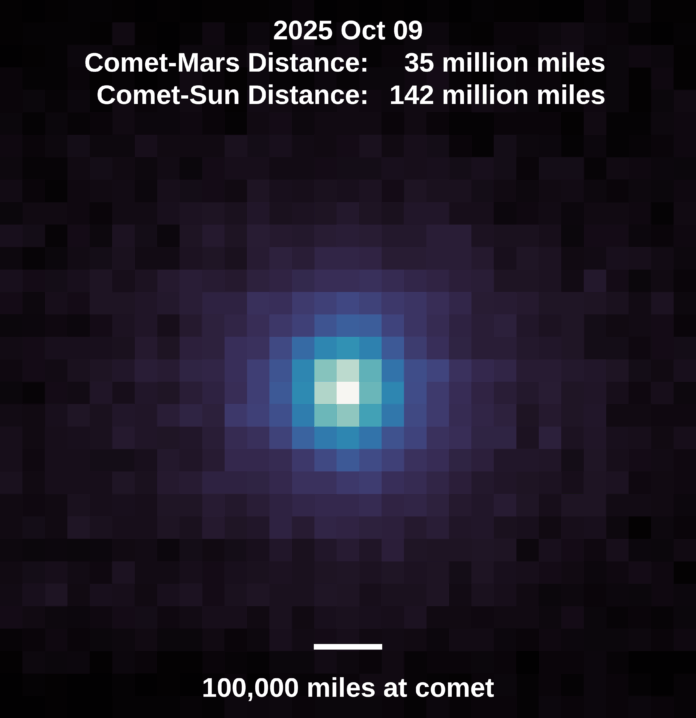KEY TAKEAWAYS
- A strange hesitancy is beginning to surface in NASA’s remarks.
- Key questions from the public are no longer getting straight answers.
- And the agency is hinting at future imagery it has not yet shown.
By Samuel Lopez
USA Herald
NASA’s live event on 3I/ATLAS continues, and tonight’s discussion has shifted in ways that feel increasingly significant. As callers pressed the agency for clarity on what has not yet been released, NASA acknowledged upcoming data and imagery but struggled to provide clean, confident explanations of what’s coming.
That alone is telling. When a caller asked directly: “What coming attractions can we expect that have not yet been released?” the panel paused, and the response—while polite—lacked structure. It drifted into phrases about “future imagery” showing “the molecules taking off from 3I/ATLAS” as it moves through space, as if describing something both fascinating and not yet fully understood. It was the most indirect answer of the evening.
Another NASA scientist referenced “tracking it in infrared” and obtaining “sharper images” in the days ahead, but quickly added that “we can’t see the nucleus very good.” That admission is important. The nucleus—3I/ATLAS’s core—is the most scientifically valuable part of the object, the region where structural anomalies, jet mechanics, thermal hotspots, and rotation signatures originate.
If NASA still cannot clearly resolve the nucleus at this stage, despite multiple observatories and instruments collecting streaming data, the question becomes whether the nucleus itself is unusually dim, unusually reflective, unusually small, or emitting in ways that do not conform to the expected thermal signatures.
Tonight’s answers revealed something the public is beginning to sense: NASA is sharing information, but always just enough to maintain reassurance without crossing into speculation or uncomfortable territory.
When scientists mention “molecules taking off,” they are alluding to off-gassing—classical comet behavior—yet the phrasing felt noticeably cautious, almost as if the panel were choosing general language instead of technical confirmation. And when they acknowledge that sharper imagery is expected but not yet available, it reinforces that the current dataset remains incomplete, especially for an object already months into its observation window.
The public’s interest in 3I/ATLAS is not simply curiosity—it is a reaction to months of withheld imagery, unusual polarization readings, odd thermal signatures, and confirmed brightness anomalies.
NASA’s event tonight played like a balancing act between scientific professionalism and a controlled release of information. For an interstellar object exhibiting properties at the margins of known behavior, clarity is not just a courtesy—it is an obligation.
Still, the panel’s willingness to discuss upcoming infrared tracking and eventual molecule-level imaging suggests that the next wave of data could be more revealing than what has been shared so far.
If those images show jet asymmetry, anti-tail formation dynamics, rotation behavior, or surface properties that diverge from natural expectations, these next updates may end up being the most scrutinized NASA releases of the decade. For now, the agency is asking the public to be patient while it works to refine its imagery, improve its nucleus resolution, and prepare the next batch of data for release.
But the lack of clarity in tonight’s answers speaks for itself. We are entering a new stretch of this investigation—one where the questions are becoming sharper, and the answers are becoming more delicate.



